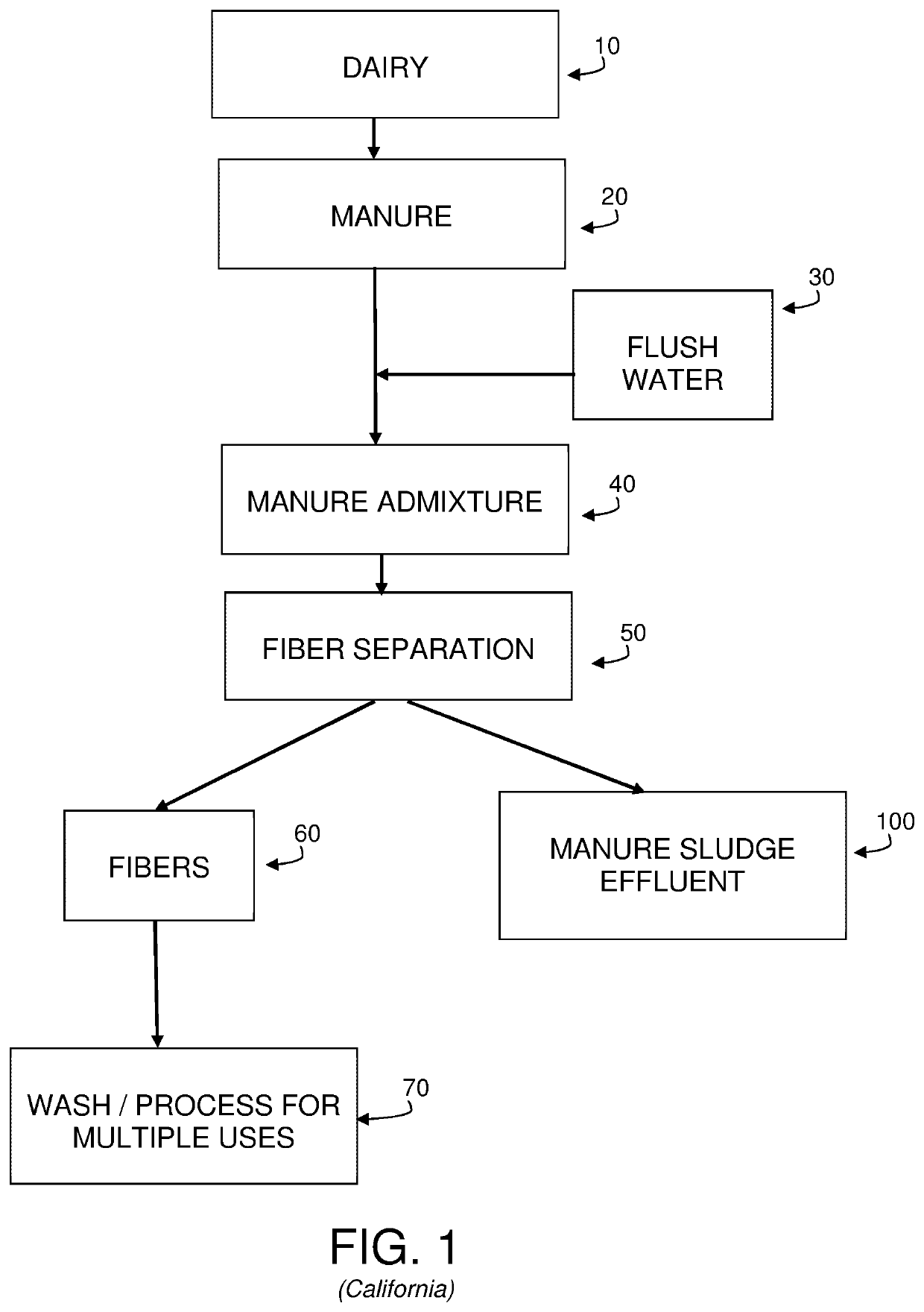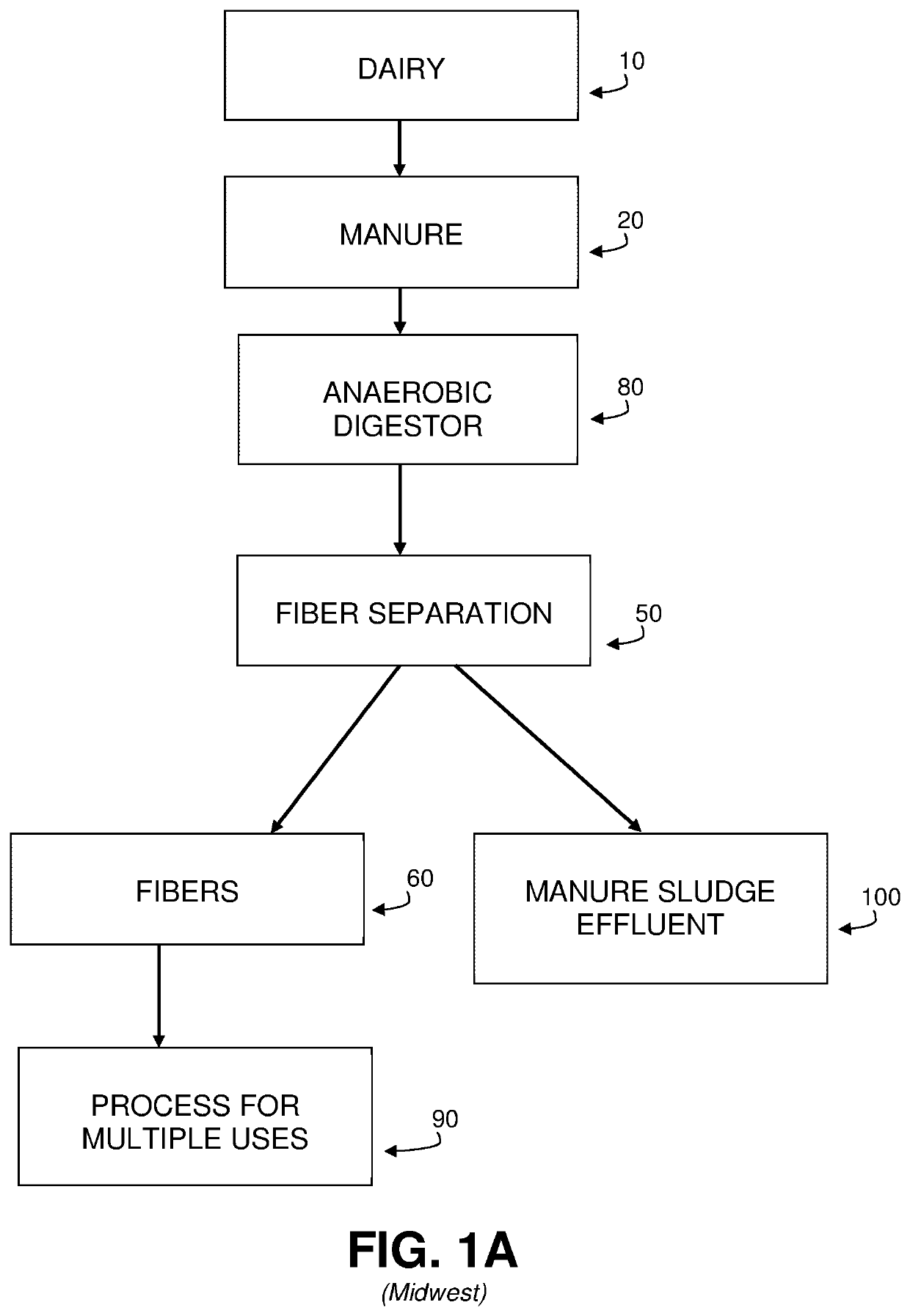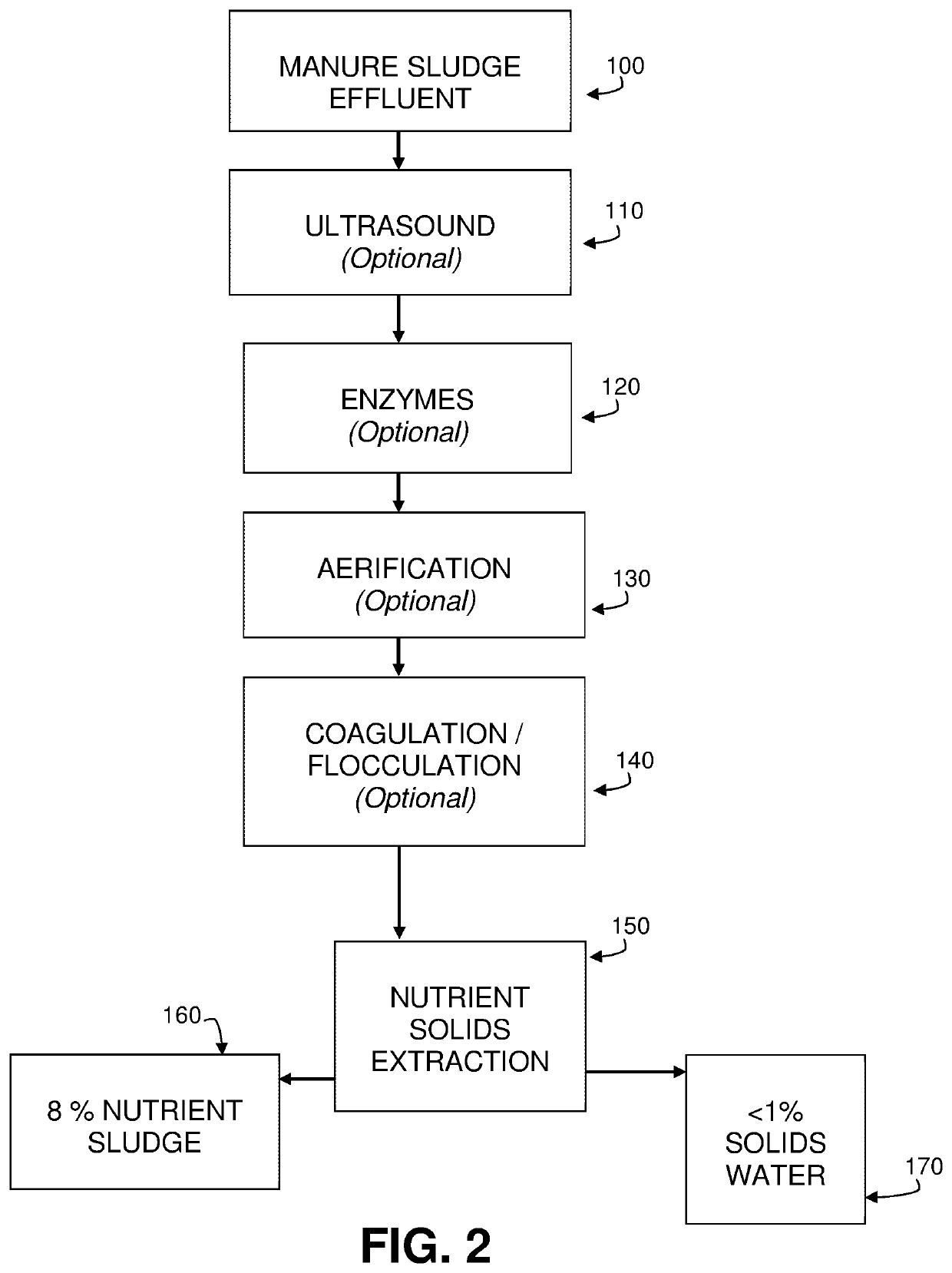Systems and methods for treating dairy waste
a technology for livestock waste and systems, applied in biological water/sewage treatment, biological sludge treatment, multi-stage water/sewage treatment, etc., can solve the problems of unaccepted best practice, exposure to and contamination by livestock waste, and the management of livestock waste is among the most challenging tasks, so as to facilitate the breakdown of materials present, facilitate the coagulation and flocculation of solids, and facilitate the biological degradation of sludge
- Summary
- Abstract
- Description
- Claims
- Application Information
AI Technical Summary
Benefits of technology
Problems solved by technology
Method used
Image
Examples
Embodiment Construction
[0026]The detailed description set forth below is intended as a description of the presently preferred embodiment of the invention, and is not intended to represent the only form in which the present invention may be implemented or performed. The description sets forth the functions and sequences of steps for practicing the invention. It is to be understood, however, that the same or equivalent functions and sequences may be accomplished by different embodiments.
[0027]Referring now to the figures, and initially to FIGS. 1 and 1A, there is shown a comprehensive process for the recovery, treatment and repurposing of livestock waste as produced in the course of conventional livestock farming operations. In this regard, it is believed that the processes of the present invention may be utilized to treat any of a wide variety of livestock wastes produced by farming involving any of a variety of species of animals, whether it be hogs, poultry, cattle, and the like, as well as for use with ...
PUM
| Property | Measurement | Unit |
|---|---|---|
| frequencies | aaaaa | aaaaa |
| weight | aaaaa | aaaaa |
| flocculation | aaaaa | aaaaa |
Abstract
Description
Claims
Application Information
 Login to View More
Login to View More - R&D
- Intellectual Property
- Life Sciences
- Materials
- Tech Scout
- Unparalleled Data Quality
- Higher Quality Content
- 60% Fewer Hallucinations
Browse by: Latest US Patents, China's latest patents, Technical Efficacy Thesaurus, Application Domain, Technology Topic, Popular Technical Reports.
© 2025 PatSnap. All rights reserved.Legal|Privacy policy|Modern Slavery Act Transparency Statement|Sitemap|About US| Contact US: help@patsnap.com



